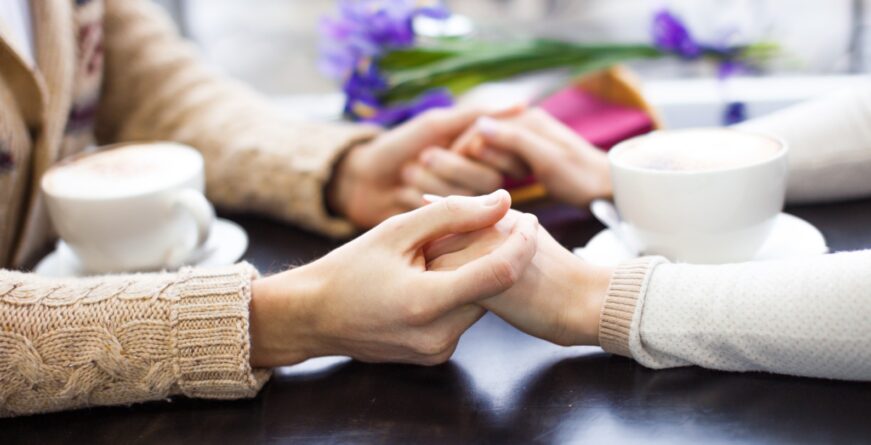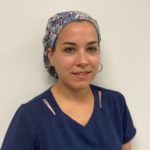On Sunday March 15, my younger sister called me crying. She had temperature of 101OF and a blinding headache, but it was an important day at her job, and she knew her supervisor really needed her help. “Stay home,” I said. “Tell him you’re sick, he’ll understand. Even if there wasn’t an emerging global pandemic, you’re legitimately sick. He’s understanding, this won’t affect your job at all. And call your doctor if the fever sticks around… If it was COVID-19, I would tell you just stay home, but it doesn’t sound like it, maybe you have something bacterial.” The next morning, things were about the same, so she called her doctor’s office and was advised to come in. A nurse wearing a gown, mask, and gloves took throat and nasal swabs. When the doctor came into the exam room, he was dressed similar, and stood at the farthest corner from her. “Well, rapid strep and flu are negative. We don’t test for it, but assume you have COVID-19. Go home and quarantine.”
At that point, believe it or not just three weeks ago, we only believed COVID-19 as a respiratory infection. She called me scared, suddenly afraid she might have a life-threatening illness. “Why would they say, just assume? What does this mean for me?” She lives with my 60-year-old mother, who had been dropping off groceries at her 85-year-old mother since the first reported case. Everyone had been doing their part at social distancing, but was it enough? I reached out to the New York State Department of Health for guidance. “That’s ridiculous,” they told me. “She has no respiratory symptoms, without coughing she can’t spread droplets, and if they considered her a Person Under Investigation, they should have referred her for testing.” Within a week, we would find that every single one of those instructions had become obsolete or been proven incorrect. As the days progressed, she began to vomit excessively, unable to even keep water down. The fever continued. By that point, I began to hear reports from friends and colleagues on the front lines about younger patients presenting with GI or other atypical symptoms, and the daily reports I received from my mother had me more and more concerned. Friday the 20th, I contacted the DOH again. The hold time was 100 minutes. I described her symptoms, and this time they took down her information so they could contact her with a testing site and time, advising that she must come alone so as not to expose anyone else. Saturday evening, my mother called me frantic. After vomiting all day, my sister was too weak to sit up and while she wasn’t disoriented, she was acting euphoric- that’s medical speak for “she knew who she was and where she was but sounded high as a kite”. My concerns about dehydration, lurking in the back of my mind when the vomiting began, started creeping to the forefront. I contacted several urgent cares in her neighborhood, looking for someone who could administer IV fluids and do bloodwork. The answers were all the same: urgent cares aren’t designed for isolation; they aren’t seeing anyone who is suspected COVID-19. Desperate, I reached out to friends who are active EMTs and live closer to her to see if anyone could evaluate her. In full isolation gear, a friend went over to see her. “Look, she’s sick. She’s really sick,” he told me. “Any other time, any other virus, she probably would be hospitalized. But this time, she won’t be. I’ve been in the EDs, they’re overflowing. She’ll wait, and ultimately, she probably won’t get a bed. There’s just too many people sicker than her.”
Nobody slept that night. The next morning, the DOH called to give her an appointment slot the following day at a public park 18 miles away. Going alone wasn’t an option anymore, she could barely sit up let alone drive. So, Monday morning my mother packed her, a blanket, and a bottle of Powerade, into the car and made the trip up to what I now refer to as their “black ops testing experience”. At the entrance to the park, they were stopped by the National Guard, in uniform, with yellow safety vests and surgical masks. “Hold your ID up to the window- DO NOT OPEN YOUR WINDOWS,” the soldier shouted at them. Their appointment was verified, and they were directed to drive up to a testing tent. The nurse at the tent shouted through her mask and the sealed window. “Since you’re here and exposed, you’re getting tested too,” she called out to my mother. “Tilt your heads back, open the window and please, please, don’t cough or sneeze on me.” They had their noses swabbed and were cleared to leave. That was when it started to snow. Can’t make this stuff up. Twice, they pulled over for her to kneel in the slush on the side of the highway and vomit.
Then came the long anxious wait for results. With the amount of testing done daily, I wasn’t surprised at all that the timeline they gave us was behind by a day or two. On Thursday, my mother’s temperature creeped just above normal and she started complaining about ear pain. She called her primary doctor’s office, who gave her a mask and saw her in a tent in their parking lot. Once again, rapid strep and flu are negative. They prescribed antibiotics “just in case.” She asked me what I thought. Well, it’s been three days, maybe give it one more day to see how your viral culture comes back? On Friday afternoon, March 27, the DOH called, they both tested positive. Two weeks of quarantine from the date of testing for anyone in the house, and anyone sick must be symptom free for 72 hours, even if that’s longer than 14 days. Now my brother, the last man standing in the house, who had been picking up the groceries, dropping food off on my grandmother’s doorstep, has become Typhoid Mary (I educated my entire extended family on her life story, side bar, a very relevant reference to the asymptomatic carriers of this virus. Although she probably didn’t wash her hands…. I digress).
By that point, I think I would have been more surprised if they tested negative instead of positive. But my anxiety about my mother skyrocketed. I fretted and checked in with her daily. By sometime around the 30th, my sister was strong enough to care for herself, and by the end of that week she was feeling well. My mother’s temperature climbed, she developed a cough, but luckily, surprisingly, she bounced back faster than my young healthy sister, and seems well on her way to recovery as well. I hear my brother built a firepit in the backyard and repainted the dining room ceiling.
As this global health emergency evolves, I’ve developed a mantra: “We don’t know yet.” As my family’s token healthcare provider, with experience as an EMT as well as laboratory, in the scramble to gather information and understand this health crisis, I’ve repeated to them more times than I can count, “we just don’t know yet.” And perhaps for me that’s the biggest emotional challenge. I’m a healthcare provider, I’m a doer, I’m used to jumping in and caring for my family when they’re in need, and in this era, there’s nothing I can do but monitor and advise from a distance. I’m avidly reading studies as they get published, I’ve given my family crash courses in interpreting data and checking sources to try and make sense of the information overload. (For those interested, if you hear about a “miracle solution”, read the information carefully. Was the study published by a credible medical site/journal, or was it “published” to YouTube or the media? What was the sample size- how many people were in the study? Who was excluded and why? If people got better, what’s the likelihood that they would have recovered without intervention?)
A Note from Michael Werner, MD, Medical Director at Maze Health
In this time of fear and uncertainty, it’s important to share information such as this so we can all better understand the severity of this pandemic and its effects on individuals and our communities. At Maze, we are diligently practicing social distancing by remaining open on a very limited basis. We are seeing existing patients with only a practitioner and one patient in the office at a time and our laboratory remains open for emergency sperm cryopreservation (for patients about to undergo chemotherapy etc.). Simultaneously, we are doing our best to serve our patients via telehealth services. If you need assistance, please contact us. We’re here to help.


